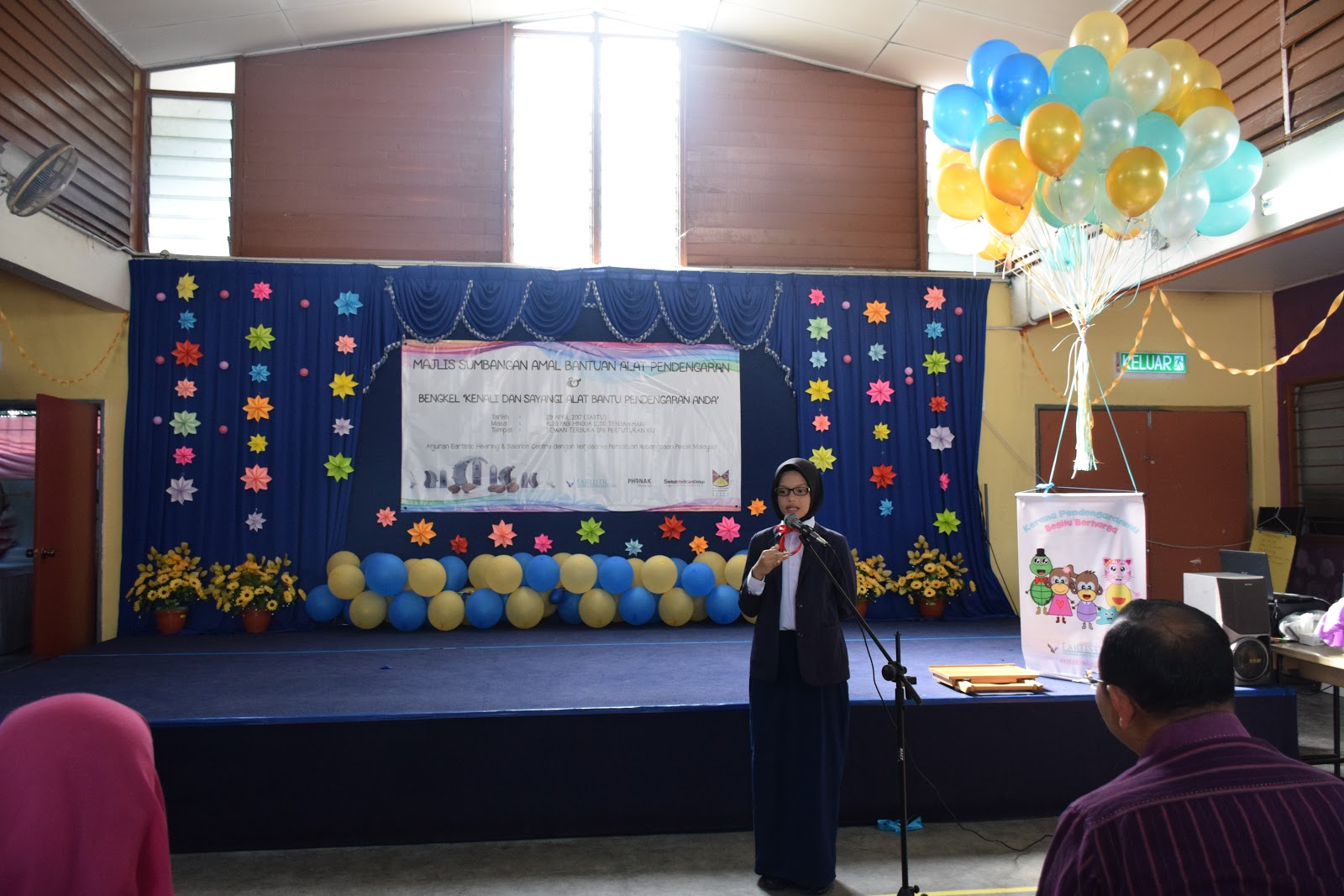Pada 29 April 2017, Eartistic Sdn Bhd dengan kerjasama Persatuan Kebangsaan Pekak Malaysia, SwissMedicare Sdn Bhd dan Phonak telah mengadakan satu program yang dinamakan sebagai Majlis Sumbangan Amal, "KERANA PENDENGARANMU BEGITU BERHARGA".
Program ini telah dijalankan di SPK Pertuturan Kiu (SPKPK), Kg. Pandan, Kuala Lumpur. Kehadiran khususnya adalah dalam kalangan ibu bapa pelajar yg belajar di SPKPK ini.
 |
| Sebahagian Ibu Bapa yang hadir pada hari program berkenaan |
 |
| Ucapan perasmian telah di sampaikan oleh YBrs. Tuan Haji Ir. Nazemi Mat, selaku presiden Persatuan Kebangsaan Pekak Malaysia |
Setelah selesai ucapan persamian dari YBrs. Tuan Haji Ir. Nazemi Mat, agenda diteruskan pula dengan gimik perasmian oleh YBs. sendiri bersama2 CEO Eartistic, Dr. Shasa Aziz dan juga wakil SwissMedicare, Kia Ing .
 |  |
Program Majlis Sumbangan Amal ini dimeriahkan lagi dengan persembahan pelajar - pelajar dari SPKPK.
|
|
|
|
 |
| Persembahan Tarian Tradisional Melayu |
 |
| Choral Speaking |
Selesai sahaja persembahan daripada pelajar-pelajar SPKPK, majlis diteruskan lagi dengan acara penyerahan sumbangan alat bantu pendengaran dan sesi bergambar.
 |
| Gimik penyerahan sumbangan alat bantu pendengaran kepada salah seorang pelajar SPKPK. |
 |
| Penerima sumbangan alat bantu pendengaran (pelajar) bersama keluarga |
 |
| Replika cek sumbangan |
 |
| Penyerahan sijil penghargaan kepada pihak SPKPK, selaku tuan rumah, dan juga diatas kerjasama bagi menjayakan progam ini |
Setelah selesai minum pagi, para penerima-penerima sumbangan beserta ibu-bapa diberi pendedahan betapa pentingnya alat bantu pendengaran dengan menghadiri Bengkel "KENALI & SAYANGI ALAT BANTU PENDENGARAN ANDA".
Bengkel ini telah dikendali & disampaikan oleh Tasnim Hazizan, selaku audiologis dari Eartistic Sdn Bhd.
Setelah selesai bengkel, para ibu bapa di ajar pula bagaimana untuk menggunakan alat bantu dengar dengan betul. Selain itu, Tasnim dibantu Dr. Shasa, melakukan Fitting kepada pengguna atau pelajar yang mendapat sumbangan alat bantu pendengaran tersebut.
 |
| Tenaga pengajar SPKPK bersama YBrs. Tuan Haji Ir. Nazemi Mat, selaku Presiden Persatuan Kebangsaan Pekak Malaysia |

Terima kasih kepada semua pihak yang terlibat secara langsung ataupun tidak. Semoga program seperti ini dapat diteruskan lagi, dengan harapan semua dapat menjalani kehidupan yang lebih baik hendaknya. InsyaAllah.
Mohon maaf diatas segala salah dan silap , serta kekurangan dari pihak kami.
Moga berjumpa lagi di program yang akan datang.
Ditulis oleh:
Nabilla Azmi,
Nurse.






























